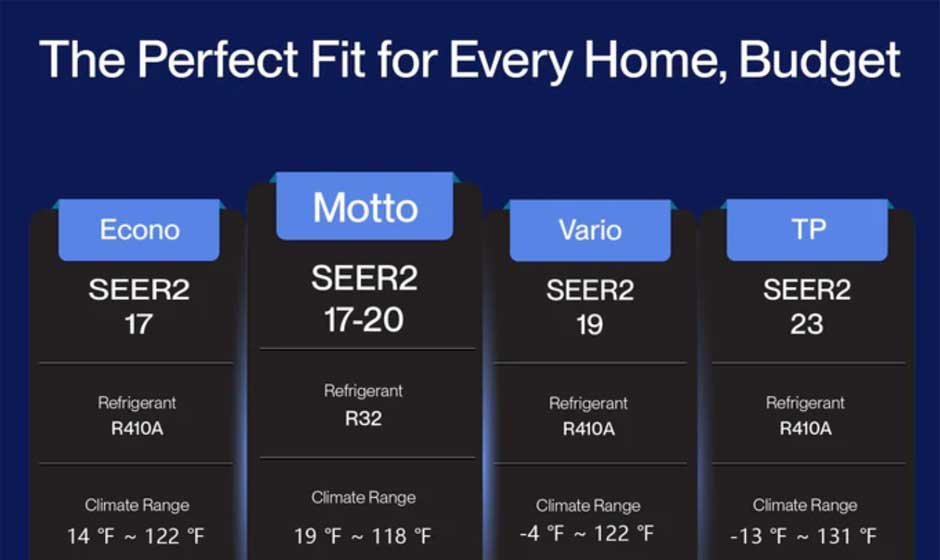When choosing a mini split AC, one of the first things people notice is the BTU rating. But what does this really mean in terms of performance?
Is 12000 BTU enough to cool a medium-sized room efficiently? This guide explores how to evaluate your room size, insulation, sunlight exposure, and usage to determine if a 12000 BTU mini split is a good match.
What Does 12000 BTU Mean?
BTU (British Thermal Unit) measures the amount of heat an AC can remove from a room per hour. A 12000 BTU mini split typically cools areas between 450–550 sq. ft., assuming normal ceiling height and average insulation. It’s often recommended for:
- Master bedrooms
- Living rooms
- Home offices
- Compact studio apartments
However, this is only a general guideline—many variables affect performance.
What Counts as a Medium-Sized Room?
Medium-sized rooms typically range from 300 to 600 sq. ft.. But size isn’t the only factor. Consider:
- Ceiling height: higher ceilings mean more air to cool
- Wall insulation and window quality
- Heat-producing electronics or appliances
- Number of occupants
A 500 sq. ft. living room with vaulted ceilings and poor insulation may need more cooling power than a 550 sq. ft. bedroom with good insulation and curtains.
When Is 12000 BTU Enough?
A 12000 BTU unit should work well if your room has:
- Proper insulation
- A standard ceiling height (8 ft)
- Moderate sunlight exposure
- 1–2 people typically occupying the space
- Closed doors (not open to other rooms or hallways)
In these cases, the unit can maintain a consistent temperature without overworking.
When 12000 BTU Might Fall Short
This capacity may not be enough if:
- The room receives direct afternoon sunlight
- There are multiple heat sources (kitchen, computers, etc.)
- The space is part of an open floor plan
- There’s poor insulation or air leakage
- You’re in a region with hot, humid summers
In these cases, upgrading to 18000 BTU or a dual-zone setup may be necessary.
How to Estimate the Right BTU for Your Room
Here’s a basic step-by-step:
- Measure square footage (length × width)
- Use the baseline: 20 BTU per sq. ft.
- Adjust:
- +10% for sun-drenched rooms
- +4% for every additional person
- +10–20% for kitchens or heat-heavy spaces
- +10% for sun-drenched rooms
Example:
A 500 sq. ft. room × 20 = 10,000 BTU
+10% for sunlight exposure = 11,000 BTU
→ 12000 BTU would be a reasonable choice.
Why BTU Accuracy Matters in Mini Splits
Unlike window units, mini splits are more sensitive to over- or under-sizing. An oversized unit can short-cycle (turn on/off frequently), leading to:
- Inconsistent temperatures
- Poor humidity control
- Higher wear and energy use
An undersized unit runs constantly, wasting power without ever fully cooling the space.
Real Example: 12000 BTU in Practice
Case: 22×22 ft room (484 sq. ft) in a temperate zone, good insulation, some sunlight exposure.
Result with a 12000 BTU unit:
- Cools room within 15–20 minutes
- Maintains temp even during peak hours
- Runs quietly and efficiently
But when doors are left open to adjacent rooms, performance drops noticeably.
Other Factors to Consider
- SEER Rating: Higher SEER means better efficiency
- Noise Level: Important for bedrooms or offices
- Heating Function: Some mini splits offer heating too
- Smart Features: Remote control, scheduling, energy tracking
Installation Tips
- Mount indoor unit high on the wall, away from heat sources
- Keep outdoor unit shaded and well-ventilated
- Ensure proper refrigerant charge and drainage
- Plan electrical and water outlet access ahead of time
- Use a qualified technician for installation
Conclusion: Is 12000 BTU Right for You?
If your room is within the 450–550 sq. ft. range, well-insulated, and doesn’t face intense sunlight, a 12000 BTU mini split should work well. For edge cases—poor insulation, open layouts, or high ceilings—consider stepping up.
Proper sizing isn’t just about comfort; it affects energy use, equipment longevity, and noise. Always measure carefully and think beyond square footage.










